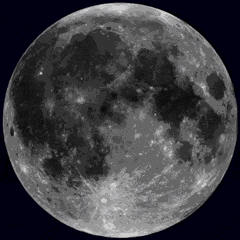<p >The developer of South Korea’s <a href="https://militarywatchmagazine.com/article/south-korea-to-triple-tank-deliveries-to-poland-96-k2s-incoming-in-2025-production-surge" target="_blank">K2 Black Panther </a>main battle tank, Hyundai Rotem, has been confirmed to have officially registered the design of a next generation tank with the South Korean Intellectual Property Office. The design is reported to be the <a href="https://militarywatchmagazine.com/article/skorean-tank-industry-bolstering-leadership-k3" >K3 tank class</a>, with the filing including a description of the materials used, a reference to the use of a “future-oriented stealth shape,” and nine drawings illustrating the tank from multiple angles. Assessments by the Republic of Korea Armed Forces that the K2 no longer fully addresses the evolving demands of modern mechanised warfare, the <a href="https://militarywatchmagazine.com/article/us-blocking-australia-abrams-ukraine" target="_blank">perceived requirements</a> of which have changed significantly due to the Russian-Ukrainian War, have reportedly been a primary factor leading Hyundai Rotem to accelerate work on a successor. </p><p >An outstanding feature of the K3 is that initial variants are intended to use a hybrid diesel and hydrogen propulsion system, before later variants use a hydrogen-only propulsion system. By 2040 the K3 is intended to be fully electric tank class using only hydrogen fuel cells, batteries, and dual electric motors. The K3 is currently the world’s only known main battle tank project that has set the integration of such a propulsion system as a primary objective, which has the potential to significantly increase available power for onboard fire control systems while allowing tanks to operate for much longer durations without refuelling. This is considered particularly important due to the Republic of Korea Armed Forces doctrine which emphasises the importance of being able to launch a armoured invasion of neighbouring North Korea, which has the potential to seriously strain supply lines.</p><p ><img src="https://militarywatchmagazine.com/m/articles/2025/05/06/article_68195a22769e41_98247351.png" title="K3 Tank Concept Art"></p><p >One of the most significant changes to the K3 from the K2 is the integration of an intelligent fully automated gun turret, which will improve crew protection while allowing the vehicle to engage its targets much faster and with greater precision. The turret will mount larger 130mm main gun, replacing the NATO standard 120mm gun used on the K2. The new gun will deploy next-generation kinetic energy penetrators and high-explosive rounds, including locally developed K279 series ammunition. Armour protection levels will benefit from new generations of composite and reactive armour and advanced active protection systems, with its design set to particularly focus on the ability to counter&nbsp; top attack munitions and single use drones, which is considered particularly important due to the high&nbsp;<a href="https://militarywatchmagazine.com/article/u-s-concludes-abrams-tanks-not-useful-for-ukraine-following-heavy-losses" >demonstrated vulnerability</a>&nbsp;of both Western and Russian tanks to top strikes by single use drones in the Ukrainian theatre. </p><p >The perceived importance of developing the K3 is expected to grow as North Korea makes further progress in bringing the Tianma 2 main battle tank into widespread service, with the vehicle appearing to bridge many key performance gaps with the K2 and revolutionising the armoured warfare capabilities of the country’s frontline units. North Korean state media in May 2025 unveiled a large scale new factory manufacturing the Tianma 2, with the country’s leadership <a href="https://militarywatchmagazine.com/article/nkorea-large-production-tianma2" target="_blank" >outlining plans </a>for large scale production to replace older T-55 and Chonma tanks that currently form the backbone of the country’s armoured units.&nbsp;</p>
